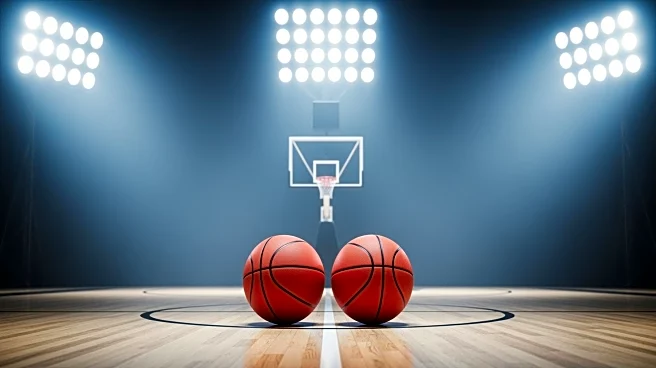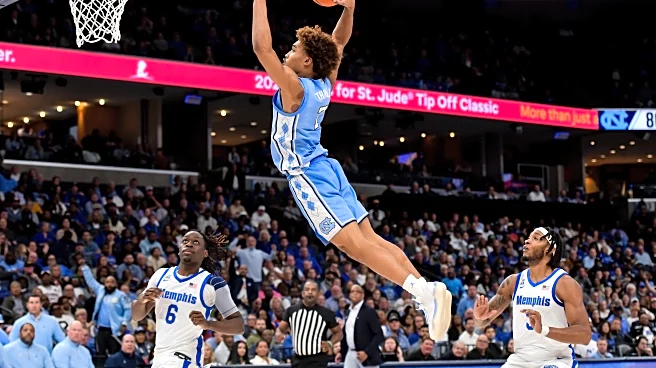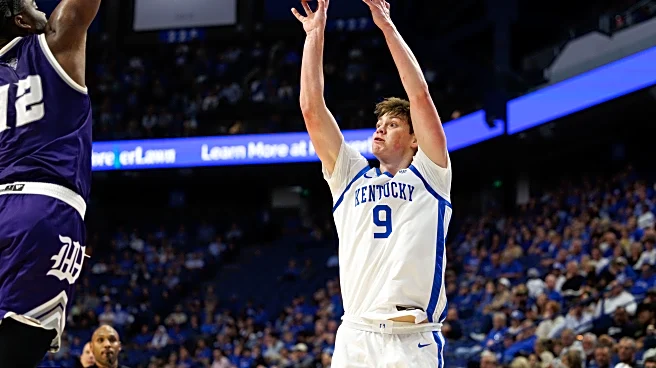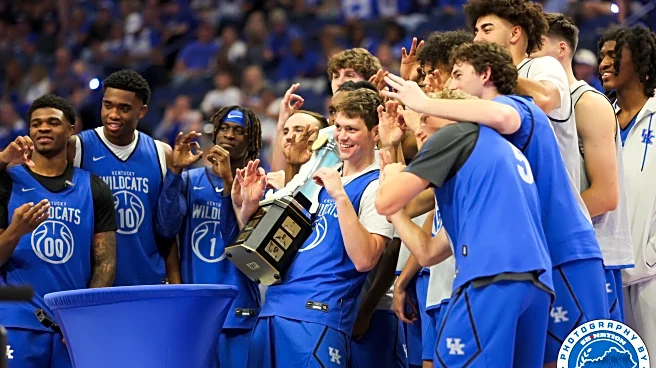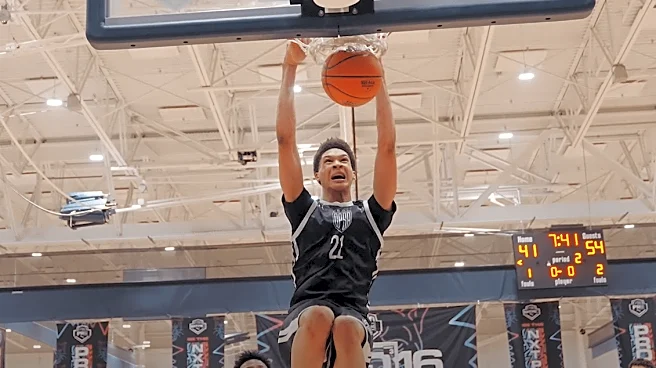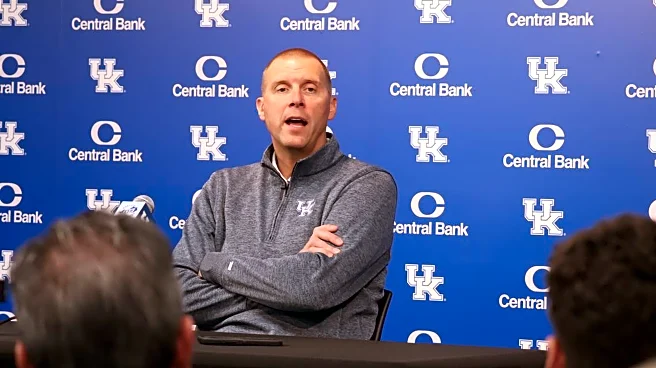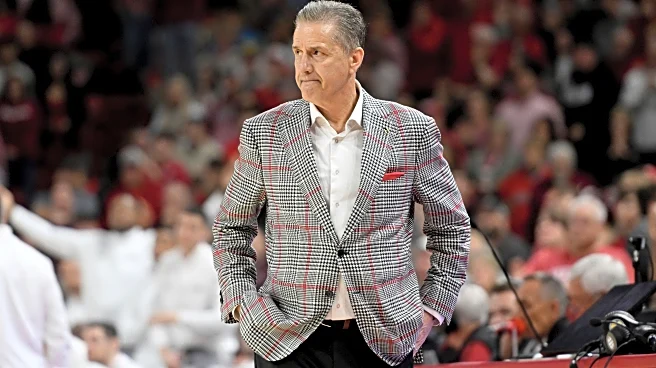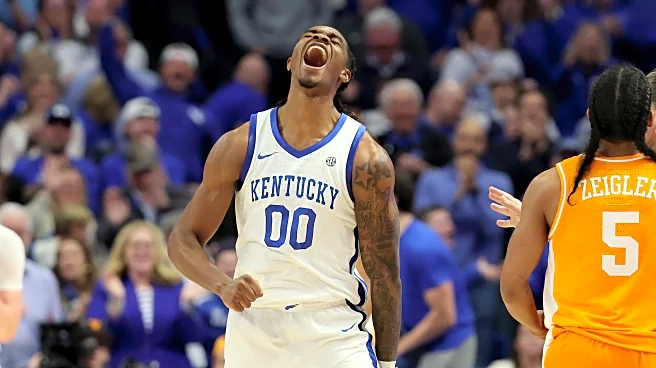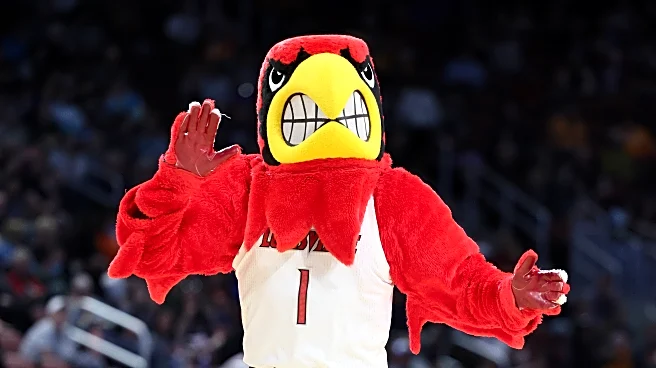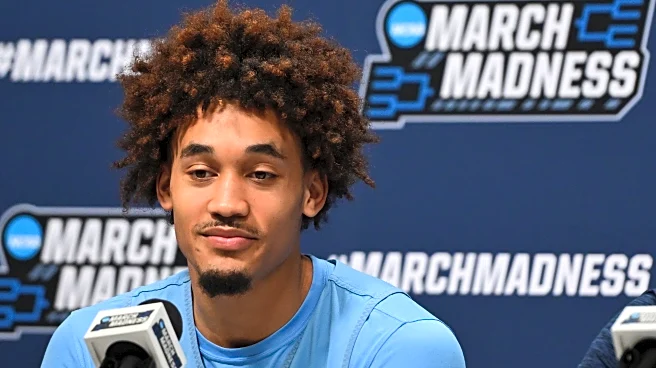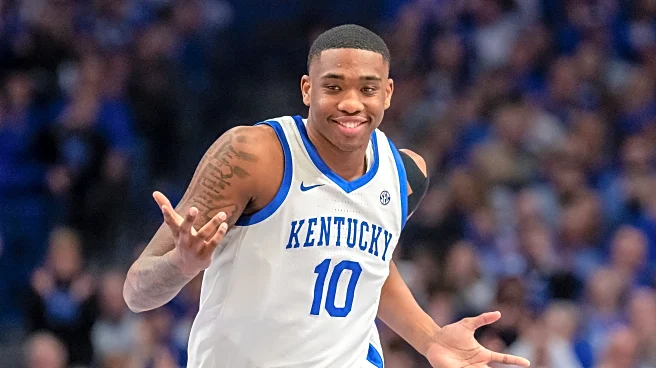What's Happening?
The Kentucky Wildcats men's basketball team is entering the 2025-26 season with a reported payroll of at least $22 million, according to Ben Roberts of the Lexington Herald-Leader. This figure is attributed
to the new NIL rules allowing direct payments to athletes, marking a significant increase from the previous budget of less than $4 million during John Calipari's final season. The team, led by Coach Mark Pope, boasts a strong roster with incoming transfers and a highly ranked freshman class. Jayden Quaintance, a transfer from Arizona State, has the highest NIL valuation among Kentucky players at $1.9 million. The Wildcats are set to open their season against Purdue, the top-ranked team in the AP Top 25 preseason poll.
Why It's Important?
The substantial payroll reflects the growing influence of NIL deals in college sports, particularly for high-profile programs like Kentucky. This financial commitment underscores the pressure on Coach Pope to deliver results, as the team aims to build on last season's success, which included a Sweet 16 appearance. The influx of funds from donors and NIL deals could set a precedent for other programs, potentially reshaping the landscape of college basketball. The Wildcats' ability to attract top talent through financial incentives may impact competitive balance within the NCAA.
What's Next?
Kentucky will begin its season with a high-stakes matchup against Purdue, providing an early test of the team's capabilities. The Wildcats' performance will be closely watched, given the financial investments and expectations surrounding the program. As the season progresses, additional NIL deals may further increase the team's payroll, influencing recruitment strategies and player retention. The broader implications of NIL spending will likely continue to be a topic of discussion among NCAA stakeholders.
Beyond the Headlines
The ethical considerations of NIL spending in college sports are significant, as programs navigate the balance between financial incentives and maintaining amateurism. The long-term impact on player development and educational priorities remains uncertain, with potential shifts in how athletes prioritize their college experience. Additionally, the role of big-money donors in shaping team dynamics and competitive fairness could lead to calls for regulatory adjustments within the NCAA.
